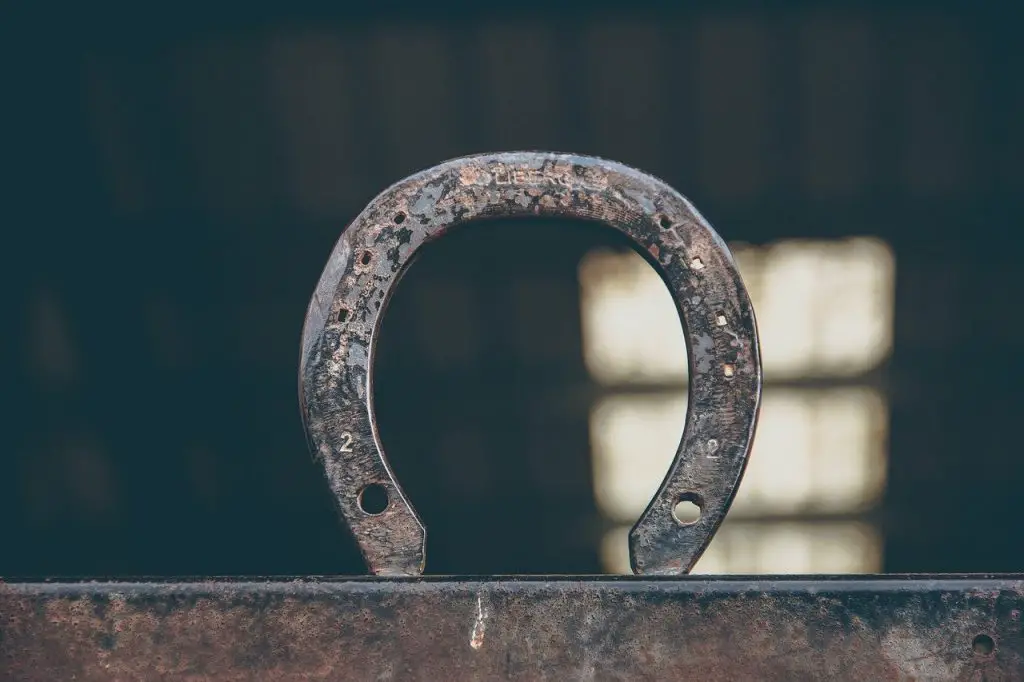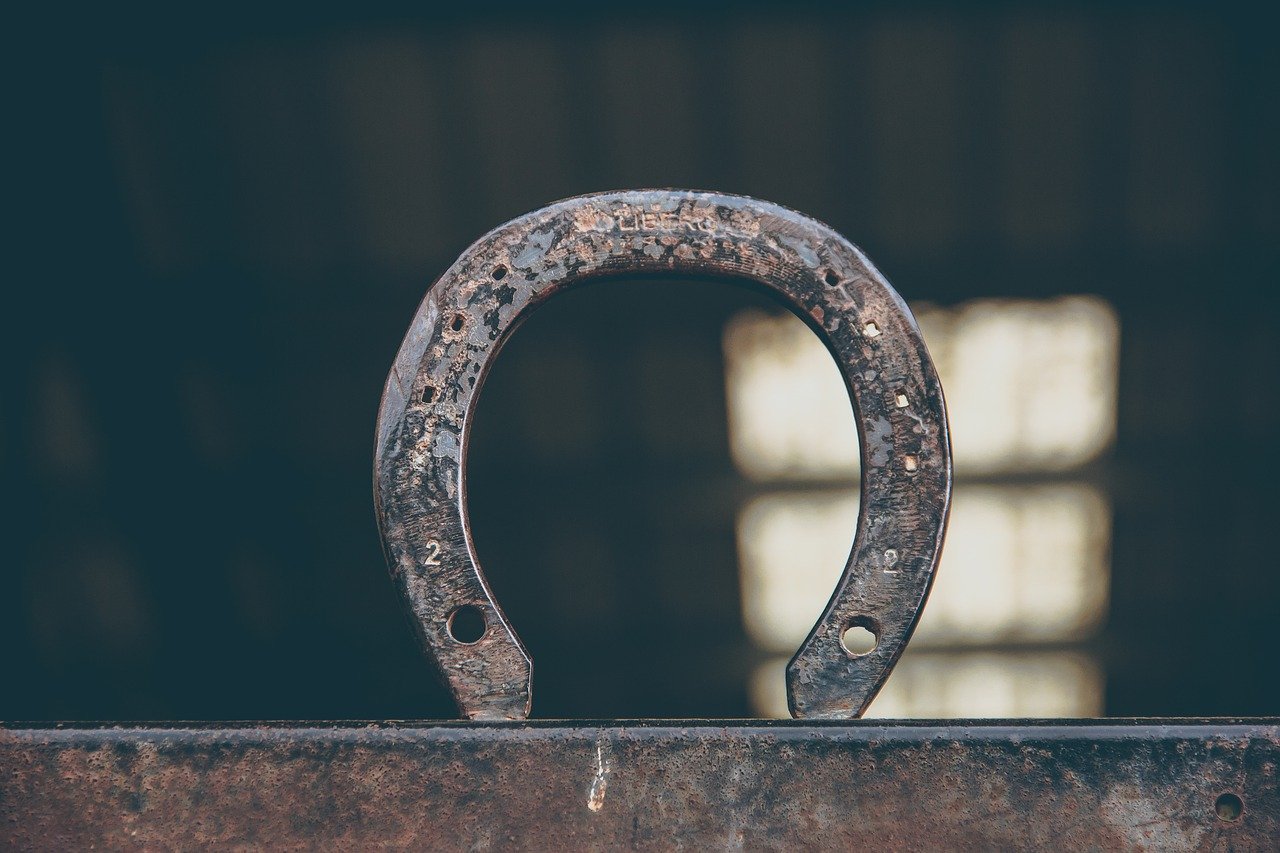Last Updated on March 26, 2022 by Allison Price
Horseshoes have been a symbol for good fortune around the world, but are they suitable for horses? What does it feel like to wear horseshoes on horses? Horseshoes are essential for equestrians. They protect the feet of your horse and improve its hooves. Horseshoes can be more than just for horses.
Shoeing horses is an age-old tradition. Its primary purpose is to protect their hooves. If you’ve ever done the shoeing, it may seem quite painful. It isn’t so bad if you have the right horseshoes.
Horseshoes are required for many reasons. Horseshoes are essential for horses who ride on rough terrain. It all depends on the horse and what kind of work the horse does. This guide will cover all that you need to know about horseshoes, which are curved metals.
What’s the purpose of horseshoes?
Horseshoes are shaped in a U-shape to protect horses’ hooves. It can be made from aluminum or steel and attached to the horses feet by being nailed. A skilled farrier can attach the shoes quickly to the horses’ hooves without hurting them.
Horseshoes are used to protect the horse’s hooves. Horses that move or ride often will eventually wear down their hooves, particularly if the terrain or terrain is rough or arid. Horseshoes also protect the rocky terrain. Horseshoes are useful for preventing injuries when horses are used to pull heavy loads or carriages. Horseshoes can be used for many other reasons, besides safety. Horseshoes can be used for many other purposes, such as:

- Corrective purposes: A farrier may use a corrective saddle to correct a horse’s imbalance. If the horse is suffering from imbalance, a suitable horseshoe may be used to provide extra support.
- Stability and traction can be a problem for horses, particularly in poor weather or on uneven terrain. Horseshoes are a great option in these situations because they give the horse a better grip on the ground.
- Horseshoes can also be used for medical purposes. Shoeing is a good option for horses suffering from arthritis, laminitis or ringbone. These horses will be able to walk and run comfortably with horseshoes.
Horses can wear different kinds of shoes, depending on their work and needs. Some horseshoes can be tougher and more durable than others, while some are lighter and more comfortable. A racehorse requires lightweight shoes that can move quickly on the tracks and grip the ground better. Horseshoes have many benefits. They improve overall performance.
Horseshoes are cruel and barbaric?
It may seem cruel and barbaric because the farrier places the horseshoes in the horse’s hoof wall. Many people believe that horseshoe installation is painful because of the way it is done.
It doesn’t hurt because the nails are inserted into the hooves. There are no nerves. This means that horseshoe installation and removal is painless.
If you observe a horse resisting to or flinching when shoeing, you should be able to tell that it is experiencing confusion and not pain. It is similar to trimming your nails when you take off or put on horseshoes. There are no nerves in your feet that could cause pain. This is why many people around the world have become habitual nail-biters. They don’t feel any pain while doing it. Horses are the same. You can consider their hooves to be their nails.
A professional farrier will quickly attach the horseshoes without causing any injury to the horse. The nail could get into other areas of the horse’s hoof such as the sole or frog if the farrier does not do it correctly. This can cause severe pain for horses and infection if the nail is hammered into the hoof. It is important to only hire an experienced farrier to shoe a horse.
Are All Horses Require Horseshoes?
Horseshoes are needed depending on what type of work the horse does and where it rides. Horses have different purposes. Horses that are used for transport or work reasons, such as transportation, need their hooves to be protected. Horses that run on rough and rugged terrains may have their hooves damaged.
Horseshoes are not necessary for horses to avoid injury. Horses that graze on soft grass don’t require protection for their feet. These factors are important because every horse is unique.
What are the pros and cons of horseshoes?
Pros
Equestrians have a lot to discuss. Many of them debate whether horses should be barefooted or shod. Some people believe horses should not wear horseshoes. Some people believe that horseshoes can damage the hooves or weaken them. Some argue that horseshoes have many benefits. Here are some of the benefits of horseshoes.
- Horseshoes protect your hooves against injury and damage. They increase strength and durability, and aid in intense work.
- Shoes stop the hooves wearing out too quickly. This is a useful feature for horses who need to pull carriages or are engaged in other weight-bearing tasks.
- Corrective horseshoes can help in solving various issues. Horseshoes are a good option if the horse is having balance issues. Horseshoes can also be used to correct other problems, such as a horse’s stride and gait, and cracks in the hooves.
- Horseshoes are a great way to improve the performance of racehorses, especially if you use them for cross country work or high-impact events. Horseshoes can be a great option for horses who participate in high-impact events or cross-country work.
- Horseshoes can be beneficial for horses suffering from arthritis, laminitis or ringbone. Horseshoes can provide extra support and help with such conditions.
- Because they offer grip and traction, horseshoes can prevent slippage. Slipping can result in injury to the horse as well as the rider. Slip-resistant horseshoes are a good option to prevent accidents.
Cons
There are many benefits to shoeing horses, but there are also some disadvantages if you are an equestrian. Here are some of the potential hazards associated with shoeing horses:
- Horses can be injured if a farrier does not know how to properly install the horseshoe. The sensitive inner part of the hooves can be damaged by hot or rogue nails.
- Horses that lose their shoe or spring during running or working can cause damage to the hoof wall and tendon strains.
- Horseshoes can be more costly than trimming. You can leave your horse barefoot if you are looking to save money.
Last Thoughts
Although horseshoes can be viewed as cruel, skilled farriers can make shoeing a horse’s feet painless. Horseshoes are a great way to correct instability and other health problems, provide traction and support, as well as protect horses’ hooves. You can choose to keep your horse barefooted or shod, but you will know that horseshoes won’t cause any harm.


